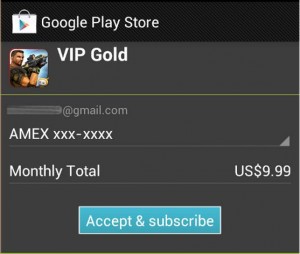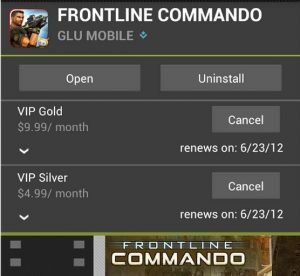In-app subscriptions come to Google Play, includes 'bundling' capabilities

Google announced on Thursday that Android developers can now use in-app Billing to sell monthly or annual subscriptions from inside of apps sold in Google Play. The feature brings Google Play up to speed with Apple's iTunes App Store, which rolled out this feature over one year ago.
With the new feature, developers set the price and billing interval and Google Play manages the purchase transactions for both the seller and the subscriber. Users can view their subscriptions in the "My Apps" screen in the Play Store app, the same place they view their updates, or they can view them in the app's product details page in the Play Store app. This is where users can cancel subscriptions if they choose.
App developers and analysts alike have determined that in-app billing and the "freemium" distribution model are far more profitable strategies for software monetization than upfront billing or ad-subsidization. Today, Ibrahim Elbouchikhi, a Product Manager on the Google Play team said 23 of the 24 top-grossing apps in Google Play use in-app billing, and the total revenue generated from in-app purchases now exceeds revenue from traditional app purchases.

Companies such as video gamemaker Glu Mobile have based their entire business around the freemium model, so Glu will become one of the first companies to unveil an application that uses the in-app subscription API with its title Frontline Commando.
The feature, however, does not have to be limited to a single app, or even to apps at all. Developers can share subscriptions across multiple apps so users can "subscribe to the developer" or they can apply it to multiple products in Google Play such as e-books/magazines, music, and movies for bundled services.